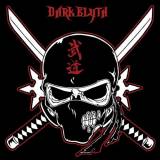1890s: Electric motor-driven Gatling gun The ancestor to the modern minigun was made in the 1860s. Richard J. Gatling replaced the hand cranked mechanism of a rifle-caliber Gatling gun with an electric motor, a relatively new invention at the time. Even after Gatling slowed down the mechanism, the new electric-powered Gatling gun had a theoretical rate of fire of 3,000 rounds per minute, roughly three times the rate of a typical modern, single-barreled machine gun. Gatling's electric-powered design received US Patent #502,185 on July 25, 1893. Despite Gatling's improvements, the Gatling gun fell into disuse after cheaper, lighter-weight, recoil and gas operated machine guns were invented.
1960s: Vietnam war In the 1960s, the US military began exploring modern variants of the electric-powered, rotating barrel Gatling gun-style weapons for use in the Vietnam War. The US forces in Vietnam, which used helicopters as one of the primary means of transporting soldiers and equipment through the dense jungle, found that the thin-skinned helicopters were very vulnerable to small arms fire and rocket-propelled grenade (RPG) attacks when they slowed down to land. Although helicopters had mounted single-barrel machine guns, using single-barrel machine guns to repel attackers hidden in the dense jungle foliage often led to barrels overheating or cartridge jams.
In order to develop a weapon with a more reliable, higher rate of fire, General Electric designers scaled down the rotating-barrel 20 mm M61 Vulcan cannon for 7.62 x 51 mm NATO ammunition. The resulting weapon, designated XM134 and known popularly as the Minigun, could fire up to 4,000 rounds per minute without overheating. (Originally, the gun was specked at 6,000 rpm, but this was later lowered to 4,000.) The Minigun was mounted on OH-6 Cayuse and OH-58 Kiowa side pods, in the turret and wing pods on AH-1 Cobra attack helicopters, on door, pylon and pod mounts on UH-1 "Huey" Iroquois transport helicopters, and on many other helicopters and aircraft.
Several larger aircraft were outfitted with miniguns, specifically for close air support, including famous gunship airplanes like the Douglas AC-47 ("Spooky" a.k.a. "Puff the Magic Dragon", converted Douglas C-47s), AC-119 Gunship ("Shadow" and "Stinger", converted Fairchild "Flying Boxcars"), and the original AC-130 "Spectre" Gunship (converted C-130 Hercules cargo planes), the H-53 (MH-53 Pave Low), and the common H-60 family of helicopters (UH-60 Black Hawk/HH-60 Pave Hawk).

Log in to comment